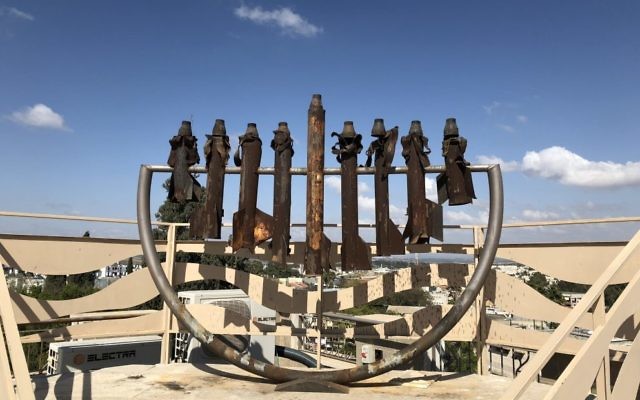In solidarity with Sderot
Several months ago, I was approached to join a nascent organisation, the Australian Friends of Sderot (AFOS). AFOS is tasked with raising funds for Sderot and in particular the Hesder Yeshivah, an institution geographically and culturally central to Sderot.
SEVERAL months ago, I was approached to join a nascent organisation, the Australian Friends of Sderot (AFOS). AFOS is tasked with raising funds for Sderot and in particular the Hesder Yeshivah, an institution geographically and culturally central to Sderot.
Like most of us, I was aware of the location of Sderot, positioned as it is on the border with Gaza. I was aware of the bombardment of rockets that Sderot has absorbed, particularly between the period of Israeli disengagement from Gaza in 2005 and the Gaza War in 2014, and the more recent threat from Hamas’s terror tunnel network. Beyond that, my knowledge of the town was limited.
Now engaged with AFOS, and having visited Sderot in the past few weeks, I’m aware of just how important the yeshivah, and Sderot more broadly, are to Israel.
The yeshivah is a community-building enterprise, providing: money to the poor of Sderot to acquire food for Pesach and other festivals; continuing education for the youth of Sderot, and running a substantial “Big Brother” program assisting young students with their studies; entertainment and celebration for Jewish festivals in public places; and active engagement with young people in Sderot, some of whom unfortunately suffer from PTSD.
The Hesder program combines yeshivah study with active army service. Participants in the program generally serve in elite combat units.
The Hesder Yeshivah started by Rabbi David Fendel in 1995, has grown from less than a minyan to almost 700 bochrim (student-soldiers) in two campuses in Sderot, and 200 in nearby Kiryat Gat. Today, the Sderot yeshivah is the largest Hesder yeshivah in Israel.
Even when studying, the bochrim are subject to call-up, and a core of trained bochrim are part of the city of Sderot’s first responders, prepared and equipped to respond in instances of enemy infiltration.
On Friday, April 13, one of the Sderot yeshivah bochrim, Yonatan Ben Gladys, was seriously injured while protecting Israel from infiltrators.
Sderot, for all its challenges (not least of which is having genocidal neighbours in Hamas less than a kilometre away) is a town with great potential.
Currently with a population of over 26,000, the town is anticipated to grow strongly in the coming years, enhanced by tax relief to industry and a speedy rail connection to Tel Aviv.
Speaking at an event on April 9, Prime Minister Benjamin Netanyahu and several cabinet ministers launched a plan for infrastructure, security and housing development of Sderot and the surrounding region.
The town is a cultural melting pot, and the social cohesion I witnessed at the investment launch event where Sephardim, Ethiopian, Ashkenazi, Chabad, non-religious and religious Zionist Jews gathered together was remarkable.
The mayor of Sderot, Alon Davidi, now into his fifth year in the post, is a powerful and capable advocate for his town. Born and raised in nearby Beersheba, he decided to move to Sderot with his young family, as he recognised the need to grow the city. Davidi has become a particularly popular leader to his constituents.
Sderot’s strength and development is strategically important, both in and of itself, and also, given its role as a key contributor to the security of the south more broadly. The Israeli government, through their investment in the city and surrounds, hopes to bolster this development and engender local confidence in the government’s commitment to the security of residents.
One of the most poignant fixtures in Sderot is located on the roof of the Hesder Yeshivah. In clear view of Sderot, and even of some residents of Gaza, stands a large Chanukah menorah, constructed from spent rockets fired into Sderot from Gaza.
The menorah is lit on Chanukah by dignitaries, and sadly by relatives of fallen soldiers, or relatives of civilians killed by terrorists.
As Rabbi Fendel said “Our menorah, a holy tool made out of the weapons of our enemies, is the ultimate expression of our belief that the Jews of Sderot are here to stay.”
To my mind, Sderot is a prime, current example of “ahavat Eretz Yisrael”, love of the land of Israel. I could not think of a clearer example of commitment to the security of the country and the Jewish people than to study and live in Sderot.
If any region of Israel deserves our support and love surely it is this place, challenged to be sure, but also a town which demonstrates a resolute optimism in the face of adversity.
GERARD MAX is chairman of the Australian Friends of Sderot. He can be contacted on gmax@maxandpartners.com.au


comments